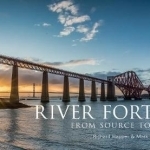River Forth: From Source to Sea
BookThis item doesn’t have any media yet
2015 | Transportation
The Forth packs more interesting historical and geographical attractions into its relatively short length than any other river in Britain. It rises on the eastern slopes of mighty Ben Lomond, the most southerly of Scotland's Munros. It then ambles through the beautiful Trossachs, an area of scenic lochs and forests nestling amid crumpled hills which was the setting for Sir Walter Scott's epic poem 'The Lady of the Lake'. At Stirling the river enters the pages of British history: it was here that William Wallace's army defeated England's forces in 1297. There is a landmark monument to Wallace on a crag above the river. Just seventeen years later, the decisive Battle of Bannockburn took place nearby, an event that helped earn Scotland its independence. The modern-day visitor centre brings the still-extant battle site to bloody life. Stirling Castle itself is the largest in Scotland and one of the country's most historic. It guards what was for centuries the furthest downstream crossing of the river and was a vital nexus between highland and lowland, east and west. Several Scottish kings and queens were crowned here.
After Stirling the River Forth becomes the Firth of Forth - the most substantial estuary on the east coast of Scotland. This book will explore the history, culture and geography of one of Scotland's most important waterways, from its source on Ben Lomond's eastern flank through the ancient city of Stirling via the Forth Bridges and on to where it joins the sea past Edinburgh, the nation's capital city.
Related Items:
| Published by | Amberley Publishing |
| Edition | Unknown |
| ISBN | 9781445648842 |
| Language | N/A |
Images And Data Courtesy Of: Amberley Publishing.
This content (including text, images, videos and other media) is published and used in accordance
with Fair Use.
